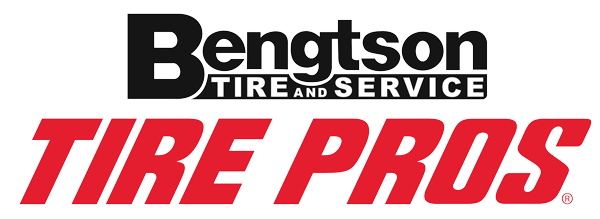Tire Safety
Tire safety is essential for your well-being and should never be overlooked. Before starting your vehicle, ensure your tires are in optimal condition to guarantee a safe driving experience. Tire health can be broken down into four key areas: tread depth, tire age, inflation levels, load capacity, and ongoing maintenance.
Always refer to your vehicle’s owner’s manual and the literature provided by your tire manufacturer for specific guidelines regarding your vehicle and tire performance. The advice provided by Bengtson Tire Pros is intended to complement, not replace, these documents. In case of any discrepancies, always follow the recommendations from your vehicle and tire manufacturer.
Understand Your Tire Basics
At Bengtson Tire Pros, customer safety is our priority. Since your tires are the only part of your vehicle in direct contact with the road, their condition significantly impacts your safety. A variety of factors influence tire performance, and it’s essential to be informed to ensure maximum safety. The following factors can also help extend your tire’s lifespan.
TREAD DEPTH SAFETY
Tread depth indicates the remaining thickness of the tread on a tire. It’s measured from the top of the tread block to the bottom of the tread groove and is usually shown in 32nds of an inch, or sometimes in millimeters.
Tread depth plays a crucial role in traction, handling, and stopping distance. As the tread wears down, these capabilities diminish. Shallow tread depths become particularly dangerous in wet or slippery conditions, where traction is already limited.
TIRE AGING SAFETY
Tires are made of rubber, which naturally degrades over time. As tires age, oxygen infiltrates the rubber, breaking it down on a molecular level. This leads to the rubber becoming hard and brittle, reducing its elasticity and strength.
Even if a tire is barely used, its age can still compromise its safety. The tire’s ability to carry weight diminishes as it ages, increasing the likelihood of failure. You can check the age of your tire by looking at the DOT number on the sidewall, which is stamped on every tire produced for road use.
Most manufacturers suggest replacing tires after 6 to 10 years of use. Bengtson Tire Pros recommends replacing tires that are 6 years or older, and we do not service tires that are more than 10 years old.
TIRE INFLATION SAFETY AND LOAD CAPACITY
Maintaining proper tire inflation is critical for safety. A tire must support not only the weight of the vehicle but also any additional load, such as passengers, cargo, and fuel. The tire’s sidewall strengthens as air pressure increases, allowing it to safely support the vehicle when properly inflated.
Driving with underinflated tires increases the risk of blowouts and tire failure. Tires that are not inflated correctly cannot support the vehicle properly, which generates excessive heat and causes the rubber to deteriorate. Over time, this may result in tire failure.
Regularly check your tire pressure to avoid driving with underinflated tires. Bengtson Tire Pros recommends referring to your owner’s manual or vehicle placard to find the correct tire pressure for your vehicle.
Vehicles built in 2008 or later come with a Tire Pressure Monitoring System (TPMS), which alerts the driver when tire pressure drops by 25% or more below the manufacturer’s recommended level.
ROUTINE TIRE MAINTENANCE
Routine maintenance is vital for tire safety. All tires should be inspected, properly inflated, and rotated on a regular schedule.
- Inspect tires monthly: This helps identify any issues such as damage or wear that could pose safety risks.
- Check air pressure monthly: Properly inflated tires support the vehicle’s weight and reduce the risk of tire failure.
- Rotate tires every 6,000-8,000 miles: Regular rotations help ensure even tread wear, improving traction, handling, and stopping distance. During rotations, the tires should also be thoroughly inspected.
By keeping up with these essential tire care practices, you can enhance safety and prolong the life of your tires.
